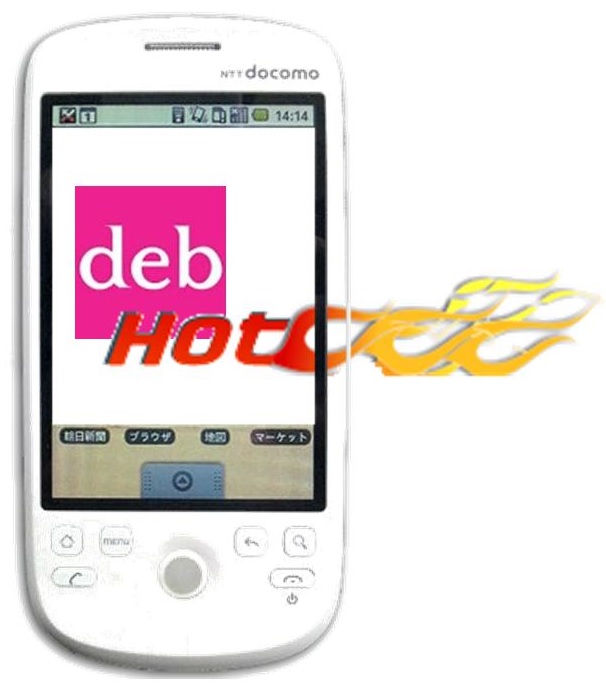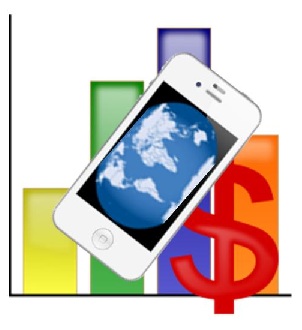The retailer saw a boost in its revenue by 170 percent following the addition of this site feature.
A new “What’s Hot” feature on the Deb Shops website is proving to be extremely successful in mobile commerce as using the button shows which products are trending on Facebook and Pinterest.
For many teens, knowing which types of clothing are hot and which ones are not are an important priority.
When Deb Shops took that into account by adding the “What’s Hot” button on its mobile commerce website, it made a considerable impact on its revenues. In fact, according to David Cost, the company’s president of e-commerce and digital marketing, when compared to the shoppers who do not use that button, those who do use it are 20 percent more likely to place an item into their shopping carts. This has brought about an increase in revenue by 170 percent.
This has been an extremely meaningful mobile commerce strategy for the retailer.
 Cost explained that “For a retailer like us that has a very broad product offering, to get customers quickly to relevant products is important, especially on a mobile device.” The retailer currently has over 30,000 products available for sale in its catalog online, and over mobile commerce.
Cost explained that “For a retailer like us that has a very broad product offering, to get customers quickly to relevant products is important, especially on a mobile device.” The retailer currently has over 30,000 products available for sale in its catalog online, and over mobile commerce.
Deb Shops first opened its mobile commerce website in April 2012, added Cost. Since that time, the traffic from smartphone users has exploded. By the end of 2011, it was making up 15 percent of the total web traffic to the site. A year after that, it had grown to 40 percent. Today, it has reached over 50 percent of the site’s traffic.
This convinced the retailer to redesign its mobile commerce website, placing a greater focus on improvements to the navigation and search features of the site. BloomReach Corp was the technology chosen by the retailer for this purpose. That company provides online hosted software that draws all of the information about the products that are being posted and talked about by consumers over Facebook and Pinterest from Deb Shops and posts it for shoppers to be able to view for themselves.
Its size is expected to grow from this year’s projected $448.6 million to 2018’s forecasted $2.6 billion.
The market for indoor geolocation marketing is rapidly growing in size, as a new report released by MaarketsandMarkets is indicating that there will be a CAGR of 42.1 percent from 2013 to 2018, that will bring it from $448.6 billion to $2.6 billion.
This report outlined the various areas of the global indoor location market and divided it into sub-groups.
It was entitled “Indoor Location Market Indoor Positioning and Indoor Navigation (IPIN); Indoor Mapping; Indoor LBS; Indoor Analytics; By Positioning Systems (Network-based, Independent, Hybrid): Global Advancements, Market Forecasts and Analysis (2013 – 2018).” Within it, MarketsandMarkets broke down the geolocation indoor market into different sub-segments through the use of deep analysis techniques and revenue predictions.
The geolocation report also pointed out the restraints and drivers within this part of marketing.
 It identified a number of challenges, opportunities and trends to indoor geolocation marketing that were very insightful and could be quite helpful to the industry. The research in this report – as is the case in many other studies in this field – was fueled by a need for better understanding of access, connectivity, and navigation.
It identified a number of challenges, opportunities and trends to indoor geolocation marketing that were very insightful and could be quite helpful to the industry. The research in this report – as is the case in many other studies in this field – was fueled by a need for better understanding of access, connectivity, and navigation.
Previously, navigation systems and commercial positioning came in the form of GPS devices, which have strength within the outdoor geolocation environments. However indoor environments present different features as there is typically an absence of satellite signals. Therefore, newer solutions are required in order to achieve the types of results that would be possible outside.
The newer geolocation technologies that provide indoor experiences are also capable of offering improved and enhanced customer satisfaction, marketing, and branding, outside of its traditional navigation use.
The report suggests that this will become very promising for retailers and other businesses while it experiences rapid adoption among the consumers themselves. It also indicated that geolocation will help to boost automation at the enterprise level. The analytics from this tech has the potential to provide businesses with highly useful behavior and purchasing data that can be used to better create marketing and shopping strategies that suit the unique needs and wants of the consumer.
 Cost explained that “For a retailer like us that has a very broad product offering, to get customers quickly to relevant products is important, especially on a mobile device.” The retailer currently has over 30,000 products available for sale in its catalog online, and over mobile commerce.
Cost explained that “For a retailer like us that has a very broad product offering, to get customers quickly to relevant products is important, especially on a mobile device.” The retailer currently has over 30,000 products available for sale in its catalog online, and over mobile commerce.
 It identified a number of challenges, opportunities and trends to indoor geolocation marketing that were very insightful and could be quite helpful to the industry. The research in this report – as is the case in many other studies in this field – was fueled by a need for better understanding of access, connectivity, and navigation.
It identified a number of challenges, opportunities and trends to indoor geolocation marketing that were very insightful and could be quite helpful to the industry. The research in this report – as is the case in many other studies in this field – was fueled by a need for better understanding of access, connectivity, and navigation.